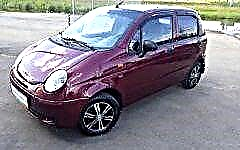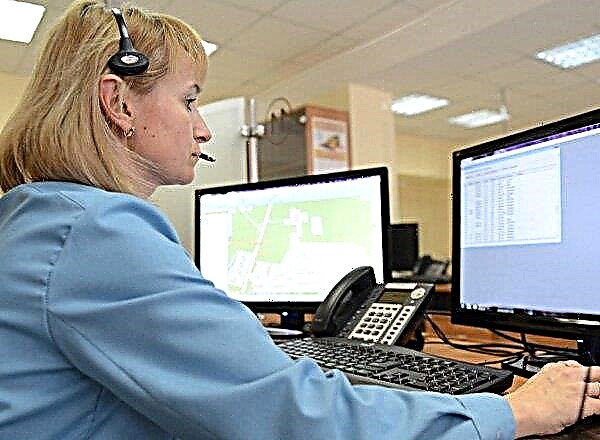

The content of the article:
- What affects fuel prices
- Falling volumes of fuel supplies
- Who is to blame and what to do
Motorists were warned that the rise in fuel prices is not planned to be stopped, which was clearly demonstrated by the phenomenally high wholesale figures on the stock exchange in the spring of 2018. And the State Duma deputies finally found the cause of all the troubles - it turns out that there are too many gas stations in Russia.
What affects fuel prices

It should be admitted right away that only in Russia for more than one decade there has been such a paradoxical situation when, at a record low cost of petroleum products, gasoline rises in price rapidly and uncontrollably. What constitutes the price of fuel?
Oil production is not particularly labor intensive or profitable. Russia has been leading in this area for a long time and firmly. But obtaining a high-quality product from raw materials, including gasoline, already belongs to a fundamentally different type of activity. Therefore, the cost of extracting oil in the final product is no more than 4%, compared to 13% for the production of fuel at the refinery. Consequently, any fluctuations, positive and negative, on the world raw material exchange should in no way affect the price of Russian gasoline.
This means that we should not blame external, but internal factors, for example, the existing tax base. Consider the share of taxes in the cost of gasoline in other countries: in America - 20%, in Canada - 32%, in Japan - 41%, but in Russia - all 60%. The government steadily increases excise taxes by 2 times a year, which all enterprises and individual entrepreneurs are obliged to pay, as well as other persons involved in organizing the transportation of fuel through Russian customs control.
But the whole burden of taxation falls on the shoulders of the end consumer - the car owner, who buys gasoline for his vehicle and thereby replenishes the state treasury.
The cost of oil production directly depends on the size of our country. If the deposits were located in the European part, and not in Siberia, it would be much cheaper. Therefore, it is scary to imagine what will happen when the Siberian subsoil is depleted and it is necessary to urgently transfer mining production to the Arctic.
Further, we must remember about value added tax, the share of which exceeds 18% in every liter of gasoline. Along with excise taxes and VAT, there is already about 25 rubles, while, for example, in Latin America a full liter of gasoline costs only 20 Russian rubles.
The next most important factor should be called the transport factor. Due to the regular increase in tariffs for railway transportation, especially oil cargo, the price of fuel will increase by at least another 30 kopecks.
Finally, the profit of wholesalers, amounting to about 9%, which is taken by gas stations.
Falling volumes of fuel supplies

Wholesale prices for AI-95 in March alone increased by 706 rubles per ton and by 541 rubles for AI-92. Only diesel showed a consistently low cost, a pleasant wallet.
The situation interested the FAS, which caught four oil companies at once for deliberately reducing the volume of gasoline supplies to the domestic market. By their actions, they made it difficult for market participants to buy it and caused a mismatch between the level of demand and supply. Given the early start of the agricultural season, the demand for diesel and gasoline fuel will be high, which will allow oil companies to sell sufficient volumes of the product.
But only if there is a direct connection between the dollar exchange rate and the export of gasoline, supplies to the domestic market become less attractive for oilmen. Therefore, if the state does not carefully monitor and control the amount of fuel on the domestic market, then a real shortage and, accordingly, an instant rise in prices may arise.
The refineries themselves are trying to justify the annual spring price hike by planned work at their own production facilities, and therefore by a forced reduction in the volume of supplies. Traders, on the other hand, use such work to their advantage, as happened with the Moscow refiner Gazprom Neft, which suspended work without notifying the Ministry of Energy. The reaction of exchange participants was instantaneous and contributed to the jump in prices.
Who is to blame and what to do

Evgeny Moskvichev of the Committee for Transport and Construction called the number of filling stations excessive for the current demand for gasoline. Representatives of independent filling stations blamed the rise in excise taxes and oil prices for the jump in prices, which ultimately led to zero profit from the sale of fuel purchased on the exchange.
Moreover, experts say that this is far from the limit, and the cost in the very near future may rise by another 20-50 kopecks and even up to 5 rubles by the summer.
However, the Duma committee for some reason does not take into account these factors, as well as the recent violation of natural pricing before the presidential elections. Then market regulators asked manufacturers to increase sales, thereby bringing down wholesale prices. Their instructions were fulfilled, which led to a drop in indices on the stock exchange by 12-13%, an increase in retail prices and a pre-bankruptcy state of the filling stations located in the regions.
However, for the deputies, these factors are not significant compared to the abundance of gas stations, the number of which they called for the abolition of Prime Minister Dmitry Medvedev himself.
Experts, however, cannot find a connection between the gas stations located every 3-4 kilometers and the rise in gasoline prices. The Russian oil and gas complex is located in 11 time zones and requires constant maintenance and investment. It is unique in its size and geographic location, and therefore justifies the funds required for itself.
In addition, even with a relative stabilization of resource prices, the country has large internal debts for gas consumption. Taking into account the new strategies and projects of Gazprom, again, large capital investments are required, which should be taken from somewhere. Why not from car owners? Since the size of the transport tax is not large enough, it means that fuel prices should be influenced.
In addition, excise taxes are an important component of regional and federal road funds. And since the Ministry of Finance is now trying to actively stimulate the development of infrastructure in the regions, all the proceeds will go directly to the construction of roads in Kaliningrad, Crimea and the Far East.
Is it possible to regulate the fluctuations in the gasoline market in Russia? The Council on Commodity Markets proposes to increase the rate of sales of fuel on the stock exchange and stop the growth of excise taxes by half of the total volume of domestic consumption. However, in the context of the latter factor, analysts recognize this development of events as fantastic. The government will never dare to reduce excise taxes, unless it will transfer them from oil refineries to gas stations.
Specialists of the SPTR are confident that only the stabilization of pricing will be able to solve the problems and prevent the bankruptcy of private gas stations, of which there are 63% in the country.
Liberalization of prices is also unlikely to be effective, since in the absence of a market mechanism for trading gasoline, prices can jump much more globally than as a result of annual government increases.
The Antimonopoly Service shows complete helplessness, which has been constantly issuing warnings over the past few months, but does not punish anyone and does not bring results. We need strict regulation of the norms for the sale of fuel on the exchange, a revision of the taxation system in order to free car owners from the large fiscal one, as well as the creation of rules and control on the small wholesale market.
The revision of taxes will also prove useful in that it will help in the fight against counterfeiting. As the inspections of the Federation of Car Owners show, it is precisely small private filling stations that have been noticed for illegal actions, which are forced to suffer losses, and therefore go to dilute fuel or purchase a cheaper low-quality product.
According to Rosstat, consumer fuel prices in Russia are more than twice as high as manufacturers' selling prices. The Federal Antimonopoly Service and the Central Bank warn that the tax burden will not only not subside, but throughout 2018 it will grow, with the most optimistic forecasts, by at least 3-4 rubles.











